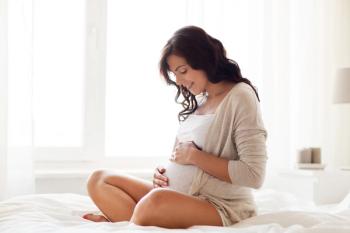
Study finds cervical cancer risk high in women aged over 65 years
New research reveals increased rates of human papillomavirus infection and cervical cancer in women aged 65 years and older, highlighting the need to reconsider current screening guidelines.
The risk of cervical cancer because of human papillomavirus (HPV) remains increased in women aged at least 65 years, according to a recent study published in Gynecology and Obstetrics Clinical Medicine.1
Current guidelines vs emerging data
Currently, guidelines suggest that women aged 65 years and older no longer need to receive regular cervical cancer screening if their prior pap tests were normal. However, the data highlighted a rising incidence of cervical cancer in this age group, indicating a need for updated policies.
“These data indicate that women [aged 65 and above] are a high-risk group for cervical cancer incidence and mortality, necessitating urgent attention from countries worldwide,” wrote investigators.
The study was conducted to evaluate characteristics of high-risk HPV (hr-HPV) in older women, included rates of cervical intraepithelial neoplasia grade 2 or worse (CIN2+).2 Data from 2017 to 2023 was obtained from 628 health care facilities in Shenzhen.
Screening methods
In Shenzhen, a combination of HPV and cytology is used to screen patients for cervical cancer. A colposcopy referral is provided to patients with a positive HPV16/18 test, while cytology is performed for patients with a positive non-HPV16/18 high-risk genotype result.
Regular follow-up was also provided to patients with negative hr-HPV results. Adjustments were made to care based on patient preference, such as providing a cytological examination to patients with hr-HPV negative results when requested. Pap smear or liquid-based methods were used to complete cytology.
Digital colposcopic examinations were conducted to analyze colposcopy results. Colposcopy referrals were provided to patients with primary abnormal results, and all abnormal colposcopic findings underwent biopsies.
Additional data collected included demographics such as ethnicity, age, region, and HPV vaccination status, as well as clinical histories such as cytology, HPV testing, and colposcopy and biopsy results. Women with missing HPV or lacking certain hr-HPC genotypes were excluded from the analysis.
HPV and colposcopy results
There were 2,152,766 records included in the analysis, with 57.47% of women receiving screening at hospitals. Approximately 91% of these patients were aged 25 to 54 years, and HPV vaccination was only reported in 2.25%. A negative test result for hr-HPV genotypes was reported in 91.88% of patients, a positive HPV16/18 result in 2.26%, and a positive non-HPV16/18 result in 5.86%.
A colposcopy referral rate of 4.14% was reported, with 41.97% of colposcopies showing abnormal results. A benign histopathological diagnosis was reported in 67.65%, low-grade squamous intraepithelial lesion in 23.02%, high-grade squamous intraepithelial lesion in 8.44%, and cancer in 0.59%.
Of patients, 0.81% were aged at least 65 years, while 99.19% were aged under 65 years. Health check-ups were the primary method of screening in 57.06% of the former group, making it the most common method in this population.
Elderly women show higher risk indicators
Women aged at least 65 years had higher rates of hr-HPV positivity, HPV infection, CIN2+, and cancer, at 13.67%, 22.8%, 3.33%, and 0.92%, respectively. In comparison, rates in patients aged under 65 years were 8.08%, 16.32%, 1.55%, and 0.1%, respectively. This indicated significantly increased prevalences in older patients.
There were 174,819 total hr-HPV infections. Overall, the HPV infection rate was 8.12% and the CIN2+ infection rate was 1.83%. In patients aged at least 65 years, these rates were 13.67% and 2.23%, vs 8.08% and 1.82% among those aged under 65 years. Based on this data, the difference in HPV incidence was statistically significant, but not CIN2+.
The 5 most common hr-HPV genotypes in patients aged under 65 years were HPV52, 16, 58, 51, and 18. In those aged at least 65 years, these were HPV 52, 16, 58, 56, and 86. Overall, this data highlighted increased hr-HPV and associated CIN2+ prevalence among women aged 65 years and older.
“Therefore, continued cervical cancer screening is necessary for this age group, although national policies should be adapted to local conditions,” wrote investigators.
References
- Women 65+ still at heightened risk of cervical cancer caused by HPV. BMJ Group. July 1, 2025. Accessed July 9, 2025. https://www.eurekalert.org/news-releases/1089214.
- Ye Z, Wang H, Zhong Y, et al. High-risk HPV distribution and importance of continuing cervical cancer screening of women aged 65 years and older: a study based on 2 152 766 women in China. Gynecology and Obstetrics Clinical Medicine. 2025;5(2).
Newsletter
Get the latest clinical updates, case studies, and expert commentary in obstetric and gynecologic care. Sign up now to stay informed.











